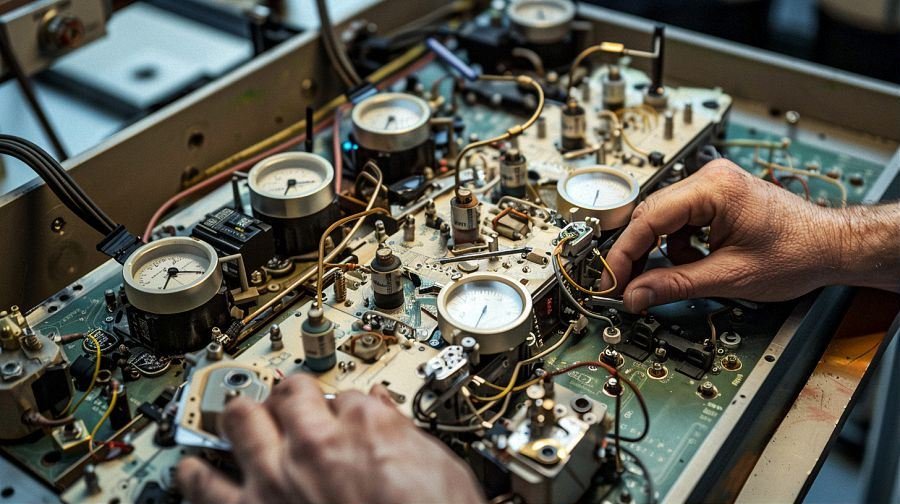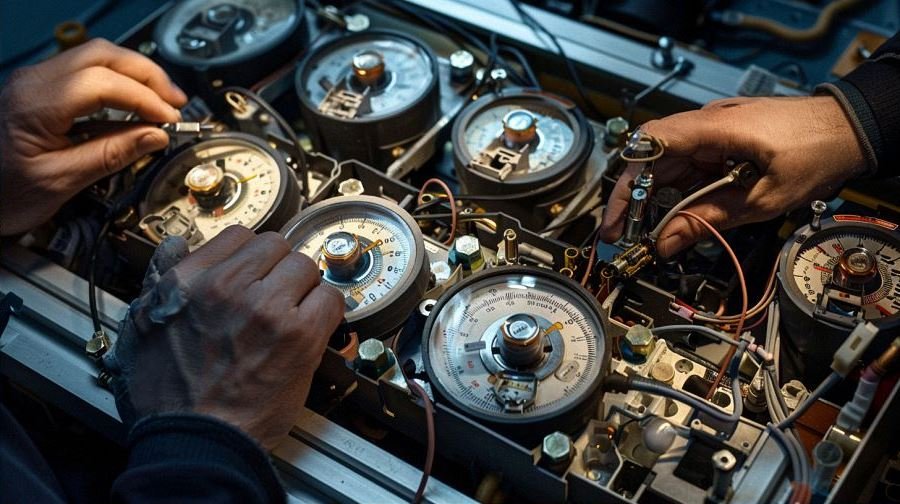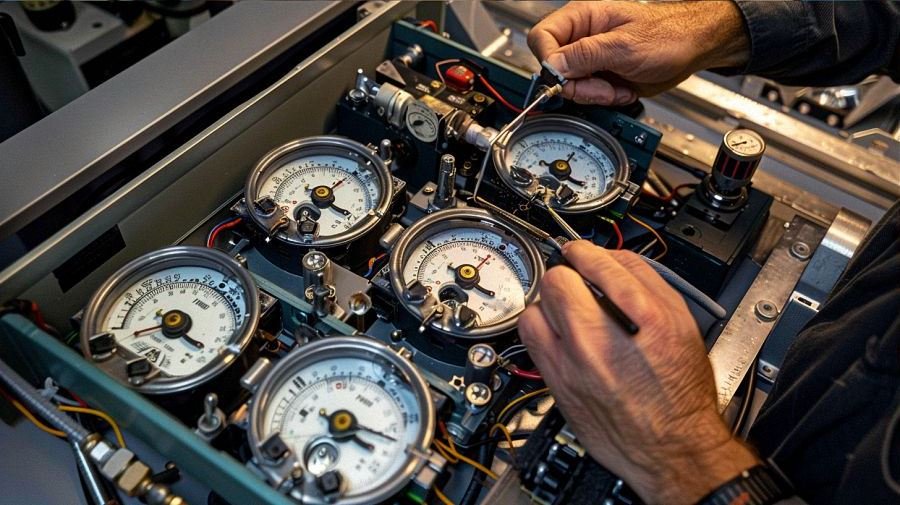Verification of Heating Meters: Ensuring Accuracy

When it comes to ensuring the accuracy of heating meters without the hassle of removal, non-invasive methods have emerged as a game-changer in the industry. These innovative techniques offer efficient ways to verify heat meters, minimizing disruption to residents while maintaining the integrity of the metering system. In this article, we delve into two prominent non-invasive methods: ultrasonic technology and magnetic induction.
Contents
ToggleUltrasonic Technology for Heat Meter Verification
Principles of Ultrasonic Heat Meter Verification
Ultrasonic technology employs sound waves to measure flow rates and verify heat meters. This method works by transmitting ultrasonic pulses through the fluid in the pipes and analyzing the reflections to determine flow velocity. By comparing the upstream and downstream signals, ultrasonic devices calculate the heat energy consumed accurately.
Advantages and Limitations of Ultrasonic Verification
Advantages:
- Non-Invasive: Ultrasonic verification does not require shutting off the heating system or removing the heat meter, minimizing disruption to occupants.
- High Accuracy: Ultrasonic devices offer precise measurements, ensuring reliable verification results.
- Versatility: This method can be applied to various pipe sizes and materials, making it adaptable to different heating systems.
Limitations:
- Cost: Ultrasonic verification equipment can be expensive to procure and maintain, especially for small-scale applications.
- Complexity: Proper training is essential for operators to interpret ultrasonic data accurately, which may require additional resources.
- External Factors: Environmental conditions, such as temperature fluctuations and pipe obstructions, can affect the performance of ultrasonic devices.
Magnetic Induction for Heat Meter Verification
How Magnetic Induction Verifies Heat Meters
Magnetic induction relies on electromagnetic principles to verify heat meters without physical contact. By generating a magnetic field around the pipe, induction sensors detect the flow of conductive fluids, such as water or glycol, without disrupting the metering process. This method offers a non-intrusive way to validate heat meter readings in real-time.
Comparing Magnetic Induction with Traditional Methods
Advantages:
- Minimal Disruption: Magnetic induction verification can be performed without shutting down the heating system or removing the heat meter, ensuring uninterrupted service.
- Real-Time Monitoring: Unlike traditional verification methods that may require manual readings, magnetic induction provides instant feedback on meter performance.
- Durability: Induction sensors are robust and can withstand harsh operating conditions, offering long-term reliability.
Limitations:
- Compatibility: Magnetic induction may not be suitable for all pipe materials or fluid types, limiting its applicability in certain scenarios.
- Calibration: Regular calibration of induction sensors is necessary to maintain accuracy, adding to the operational overhead.
- Initial Investment: The upfront cost of implementing magnetic induction technology may be higher compared to traditional verification methods, requiring careful cost-benefit analysis.
In conclusion, non-invasive methods such as ultrasonic technology and magnetic induction offer viable solutions for heat meter verification without removal. While each method has its advantages and limitations, their adoption represents a significant step towards enhancing efficiency and accuracy in heating metering systems.
Click here to learn more about heat meters and their verification methods.

Innovations in Heat Meter Verification Techniques
In today’s rapidly evolving landscape of technology, innovations in heat meter verification techniques are revolutionizing the way we monitor and maintain heating systems. Two groundbreaking methods leading the charge in this transformation are thermal imaging and IoT-enabled systems. Let’s delve into each of these innovations to understand their applications, benefits, and challenges.
Thermal Imaging for Heat Meter Verification
Using Thermal Imaging to Verify Heat Meters
Thermal imaging utilizes infrared radiation to capture and visualize heat patterns emitted by objects, including heat meters and pipes. By detecting temperature variations, thermal cameras can identify anomalies in heat distribution, providing valuable insights into the performance of heat metering systems.
Applications and Challenges of Thermal Imaging
- Applications: Thermal imaging is widely used in preventive maintenance to identify potential issues before they escalate, such as leaks, blockages, or faulty heat meters. It enables quick and non-invasive verification of heat meters without disrupting operations.
- Challenges: One challenge with thermal imaging is interpreting the data accurately. Proper training and expertise are crucial to distinguish normal variations from anomalies. Additionally, environmental factors like ambient temperature and surface reflections can affect the accuracy of thermal measurements.
IoT-Enabled Heat Meter Verification Systems
Introduction to IoT in Heat Meter Verification
The Internet of Things (IoT) has paved the way for interconnected devices and smart solutions in various industries, including heating meter verification. IoT-enabled systems leverage sensors, connectivity, and data analytics to monitor and manage heat meters remotely, in real-time.
Benefits and Considerations of IoT Integration
- Benefits: IoT integration offers unparalleled convenience and efficiency in heat meter verification. With real-time data access, operators can remotely monitor meter performance, detect abnormalities, and take proactive measures to optimize energy efficiency and reduce costs.
- Considerations: Despite its advantages, IoT integration requires robust cybersecurity measures to safeguard sensitive data and prevent unauthorized access. Additionally, there may be initial implementation costs associated with upgrading existing infrastructure and deploying IoT-enabled devices.
In conclusion, innovations in heat meter verification techniques, such as thermal imaging and IoT-enabled systems, are transforming the way we monitor and maintain heating systems. By harnessing the power of advanced technologies, we can enhance efficiency, accuracy, and sustainability in heat metering practices, ensuring optimal performance and cost-effectiveness in the long run.

Legal Frameworks and Compliance in Heat Meter Verification
In the realm of heat meter verification, adherence to legal frameworks and compliance standards is paramount to ensure accuracy, fairness, and transparency in energy billing. Let’s delve into the legal requirements, compliance standards, and best practices for ensuring accuracy in heat meter verification.
Understanding Heat Meter Verification Laws
Overview of Legal Requirements for Heat Meter Verification
Heat meter verification laws vary by jurisdiction, but they typically mandate regular inspections and calibration of heat meters to guarantee accuracy in energy consumption measurement. These laws aim to protect consumers from overcharging and ensure fair billing practices in heating systems.
Compliance Standards for Heat Meter Verification
Ensuring Accuracy in Heat Meter Verification
To comply with heat meter verification laws, operators must adhere to strict accuracy standards set by regulatory bodies. These standards dictate the acceptable margin of error for heat meters and establish protocols for verification procedures, including testing methods, frequency of inspections, and documentation requirements.
Best Practices for Ensuring Accuracy in Verification
Best Practices for Ensuring Accuracy in Verification
- Regular Maintenance: Implement a proactive maintenance schedule to keep heat meters in optimal condition and minimize inaccuracies.
- Calibration Checks: Conduct regular calibration checks to verify the accuracy of heat meters and ensure compliance with legal requirements.
- Documentation: Maintain detailed records of verification procedures, including inspection dates, test results, and any corrective actions taken.
- Training and Education: Provide comprehensive training for personnel involved in heat meter verification to ensure proficiency in testing procedures and compliance with regulatory standards.
Consequences of Non-Compliance with Verification Laws
Consequences of Non-Compliance with Verification Laws
Failure to comply with heat meter verification laws can have serious consequences for both consumers and operators. Non-compliant heat meters may lead to inaccurate energy billing, resulting in financial losses for consumers and potential legal repercussions for operators. Additionally, non-compliance undermines trust in the accuracy and reliability of heating systems, eroding consumer confidence and satisfaction.
In conclusion, understanding legal frameworks and compliance standards is essential for ensuring accuracy and transparency in heat meter verification. By adhering to best practices and maintaining compliance with regulatory requirements, operators can uphold integrity in energy billing and foster trust with consumers. Compliance with heat meter verification laws not only safeguards consumer rights but also promotes fairness and accountability in the energy sector.

